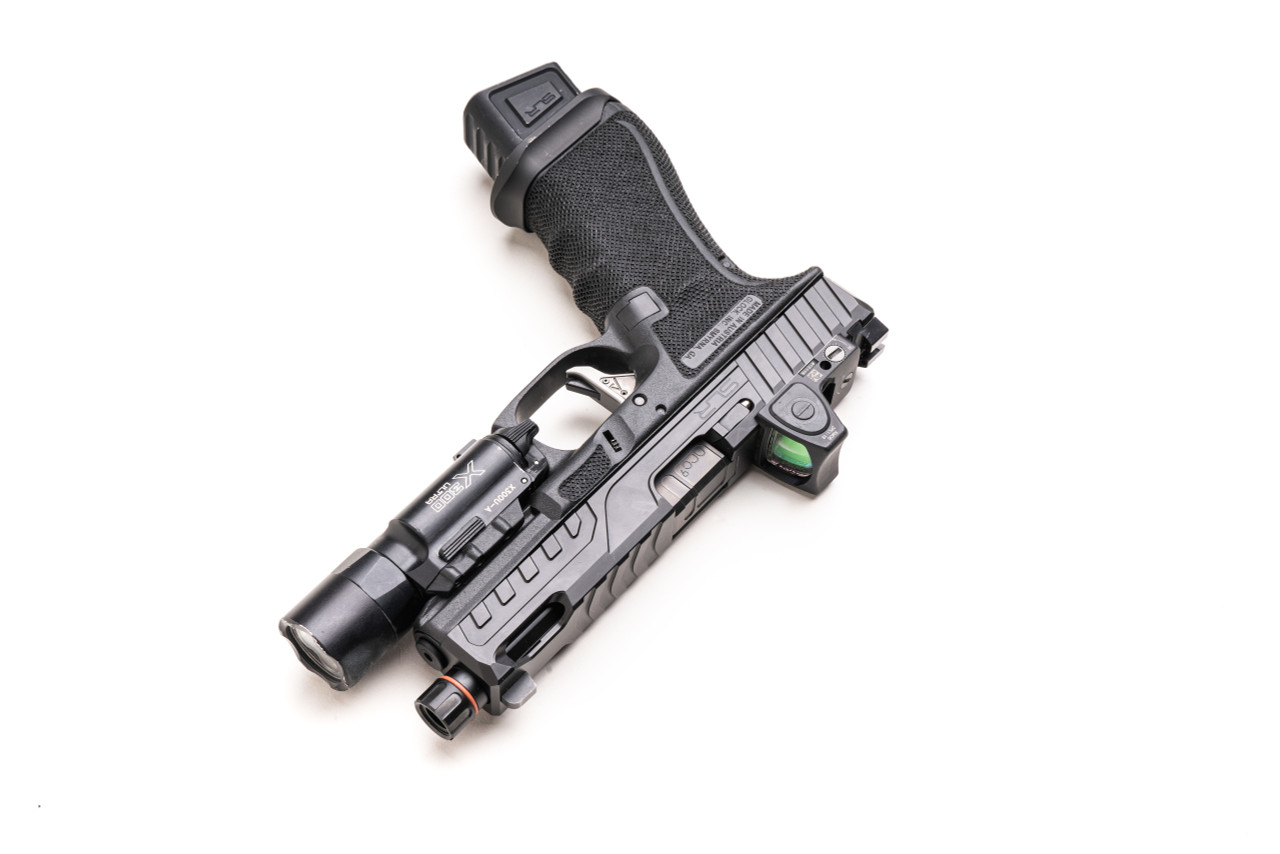The Glock 43x slide is the defining upper component of one of Glock’s most popular compact pistols, and understanding its role helps owners tailor concealment, control, and reliability. A Glock 43x slide balances the need for a slim profile with features that support quick, consistent operation. Whether you’re thinking about replacing a worn factory part, upgrading for optics, or comparing aftermarket designs, the Glock 43x slide is the first place many owners look to refine how their pistol handles and performs in real-world carry and defensive scenarios.
Design intent: concealment without compromise
From the factory, the Glock 43x slide was designed to preserve the slim, concealable footprint that made the model popular while still allowing for robust operation. The compact footprint of the Glock 43x slide contributes directly to a reduced slide-to-frame width, which feels more comfortable when carried concealed and reduces printing under clothing. At the same time, the slide’s mass and geometry affect recoil impulse and cycling reliability. When manufacturers design a Glock 43x slide, they must balance weight reduction against the need to reliably chamber, fire, and extract rounds under varied conditions. This design tension explains why many shooters are attentive to subtle differences between factory and aftermarket slides for the same model.
Materials and finishing that matter
A well-made Glock 43x slide starts with the right steel and finish. Factory Glock 43x slide options typically use heat-treated steels and corrosion-resistant coatings engineered to withstand daily carry conditions. Aftermarket makers sometimes offer variations in steel grade, surface treatments, or additional corrosion protections. These differences aren’t just cosmetic: the choice of finish and metal can influence wear over tens of thousands of rounds and can alter how the slide interacts with sights, optics, and the barrel. For owners thinking about longevity, the material and coating of the Glock 43x slide are practical considerations that pay dividends over time.
Serrations, cuts, and optics readiness
Serration patterns and slide cuts are highly visible and functional choices on a Glock 43x slide. Aggressive front and rear serrations improve purchase when racking the slide in adverse conditions or while wearing gloves. Many shooters also seek optics-ready Glock 43x slide variants that are milled to accept miniature red dot sights, a modification that dramatically improves sight acquisition for many users. Optics-ready slides can require careful selection of compatible footprints, and owners must consider co-witnessing with suppressor-height sights. The availability of optics-ready Glock 43x slide designs has expanded customization possibilities for users who want a compact carry pistol optimized for fast, accurate target transitions.
Ergonomics and user control
Ergonomics extend beyond the frame to include the slide. The feel when you manipulate a Glock 43x slide—the texture under your fingers, the balance during racking, and the perceived recoil impulse—affects how confidently you’ll deploy and operate the pistol. A slightly lighter or more aggressively serrated slide can make controlled reloads and press checks faster, which matters in high-stress situations. While small modifications can improve manipulation, it’s important to ensure that any new Glock 43x slide maintains safe headspace and compatible function with the existing barrel and recoil spring assembly to avoid negatively affecting reliability.
Aftermarket creativity and practical trade-offs
The aftermarket has produced a wide variety of Glock 43x slide options, from scalloped, weight-reducing cuts to fully optics-ready designs with sight tabs and custom milling. These aftermarket Glock 43x slide variants let owners tune performance for competition, carry comfort, or aesthetic preference. However, trade-offs exist: lighter slides may cycle differently with stock recoil springs and could require complementary changes such as a tuned recoil spring or match-grade barrel for optimal performance. When considering an aftermarket Glock 43x slide, experienced owners weigh the improvements in handling or weight against the possible need for supporting modifications to maintain reliability.
Maintenance, reliability, and everyday carry
Daily carry places unique demands on a Glock 43x slide, from sweat and pocket lint to frequent holstering and unholstering. Regular maintenance, proper cleaning, and periodic inspection of the slide’s interface surfaces are essential to keep function reliable. Whether you keep a factory Glock 43x slide or switch to an aftermarket option, routine lubrication and inspection of wear points—such as slide rails, extractor engagement areas, and the chamber face—help ensure the pistol operates smoothly when needed. A slide that is cosmetically pleasing but neglected can undermine the trusted performance every carry owner expects.
Choosing the right Glock 43x slide for you
Selecting the right Glock 43x slide depends on intended use, budget, and how much modification you’re willing to undertake. For many concealed-carry owners, a factory Glock 43x slide offers a dependable balance of concealability and reliability with minimal fuss. For those pursuing speed and sighting upgrades, an optics-ready Glock 43x slide or a precision-machined aftermarket unit can transform shot acquisition and handling. It’s worth remembering that compatibility matters: not every aftermarket Glock 43x slide is a drop-in for every barrel or striker assembly, so verify fitment and, when in doubt, consult a qualified gunsmith. Ultimately, the right Glock 43x slide is the one that matches your priorities—concealment, control, or a tailored combination of both—and that you will maintain consistently so it performs when you need it most.
